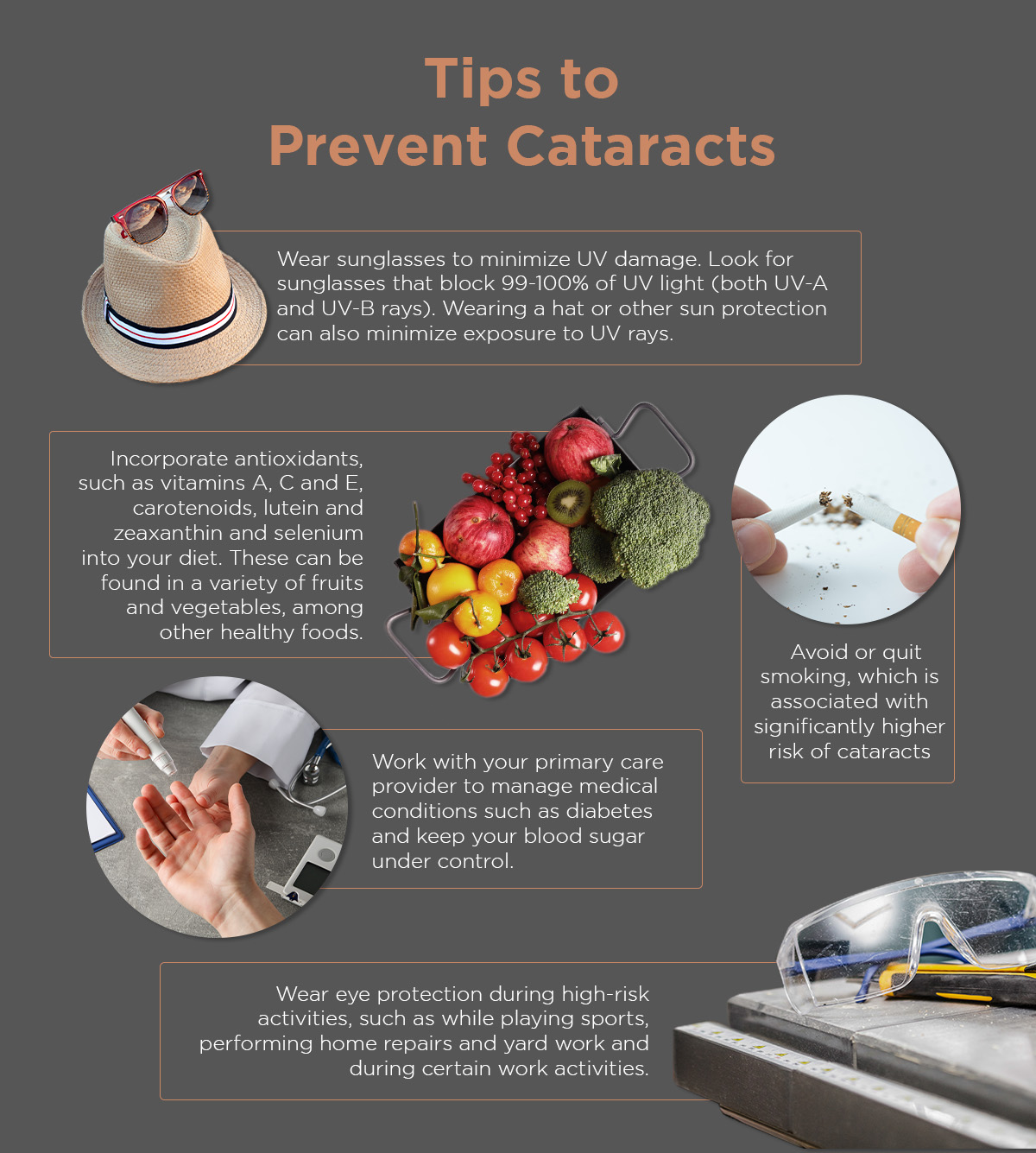Cataract: Know Why It’s Clouding Your Vision

Cataracts are the leading cause of poor vision, especially among the elderly and undergoing cataract surgery can be daunting. Research shows that in Singapore, it affects more than half of people over 60. Since it’s a common condition, it’s only right that you know the risks involved before it compromises your vision.
In this blog, we’ll delve into the reasons why cataracts can affect your vision significantly, plus other important facts.
What is a Cataract?
Inside your eye is a transparent structure called a lens, which is about the size of a lentil. The lens can change its shape, allowing the eyes to focus on objects at different distances.
Normally, your lens should be clear and transparent, so when clouding occurs, it might be a good idea to get checked for cataracts. The condition affects your vision, which makes it difficult to drive, read, watch TV, even recognize facial expressions.

How do you get Cataracts?
Cataract starts when the lens becomes thicker and denser. This happens when the natural proteins and fibres in the lens build up. These clumps of proteins and fibres block or scatter light passing through the retina—making your vision blurry or cloudy.
We typically associate cataracts with ageing, but it can also develop at any point in a person’s lifetime. In fact, some children are born with it due to the malformation of the lens during pregnancy. Cataracts that develop after birth are considered acquired and can stem from medical conditions (e.g. diabetes), eye injuries, and long-term steroid use.
Who is at Risk of Developing Cataracts?
Besides ageing, other factors that make you vulnerable to cataracts include:
- A family history of cataracts
- Unprotected exposure of the eyes to ultraviolet (UV) rays
- Health conditions such as diabetes and obesity
- Eye injuries
- Eye inflammation
- Long-term steroid use
- Previous eye surgery
- Smoking
- Obesity
What are the Symptoms of Developing Cataracts?
Cataract formation often starts as cloudy, blurry, or dimmed vision. As the condition develops, other symptoms start to surface such as:
- Poor night vision
- Double vision
- Colors appearing dull or faded
- Haloes around lights
- Distortion of vision
- Frequent need to change eyeglasses due to increasing near-sightedness
At first, the cloudiness in your vision may only affect a small portion of the lens, so you may not even notice the difference at all. But as the cataract grows denser, the lens becomes more cloudy, thus distorting the light that passes through it. You may find your vision to be challenging when carrying out your daily activities.
.
Tap here to get those symptoms check!
How quickly do Cataracts Develop?
Cataracts generally develop in both eyes, but not at the same rate. Usually, one eye will progress faster than the other.
Most age-related cataracts (senile cataracts) progress slowly over a span of years. But the pace at which the condition will progress varies with each individual. However, some cataracts, especially among elderly diabetic patients, may progress rapidly over a short time.
Trauma-related cataracts are also another fast-growing type that develops within weeks of an injury to the lens that disrupts the fibres. It can be caused by blunt trauma, penetrating trauma, radiation exposure, or chemical exposure.
How is a Cataract Diagnosed?
To make a definitive diagnosis based on your symptoms, your doctor will conduct tests that may include the following:
- Visual acuity test – You may have known this as the “eye chart exam,” where the doctor will ask you to read letters from a distance to check how sharp your vision is.
- Slit-lamp exam – This test uses a slit-lamp microscope to examine your cornea, iris, lens, and other areas at the front of the eye. The device allows the doctor to examine for abnormalities.
- Retinal exam – Also called a dilated eye exam, this diagnostic test involves eye drops to dilate your pupils. This allows the doctor to examine the back of the eyes and provide a better assessment of the cataract.
What can be done with a Cataract in its early stage?
There’s no other way to reverse or cure cataracts besides surgery. But in its early stage, the doctor can suggest preventive measures to slow down cataract progression such as wearing sunglasses or hats. However, if vision is severely affected, surgery may be recommended. These treatments are standard for all types of cataracts unless there are any contraindications.
What are the Treatments Available for Cataracts?
Cataracts need to be removed to improve vision. At our clinic, we perform cataract removal procedures such as Phacoemulsification and Extra-capsular cataract extraction for different severity of cataracts.
.
We offer a variety of intraocular lenses to correct myopia (short-sightedness), hyperopia (farsightedness), astigmatism and presbyopia (old sightedness).

Learn more about our cataract treatments here.
Here’s what you can expect after a cataract surgery:
At what stage should Cataracts be removed?
In most cases, surgery is recommended when the symptoms of your cataract have begun to interfere with your daily activities and overall quality of life. It’s also advised when eyeglasses and/or contact lenses no longer work for you.
A 2007 study revealed that patients who wait more than 6 months for cataract surgery are likely to experience negative outcomes, including vision loss, reduced quality of life and an increased rate of falls. You may consult an ophthalmologist as soon as you experience any vision changes or any of the symptoms that may be indicative of a cataract.
What happens if Cataracts are left untreated?
If left untreated, cataracts can cause total blindness. While there is no harm in delaying cataract surgery for some time, you shouldn’t wait too long either. As a cataract “hyper-matures,” it hardens and becomes difficult to remove, posing a higher risk of surgical complications.

SOURCE: wexnermedical.osu.edu
If you’re experiencing any vision problems that point to a possible cataract formation, you should talk to an eye doctor right away. Book a consultation with our team today and learn more about the treatments available to help you see clearly again!
Related Post:
More Topics to Explore:
Relevant Services:
Our Doctor

DR. JIMMY LIM
Dr. Jimmy Lim is a top ophthalmologist for cataract eye surgery in Singapore, offering over 20 years of expertise in cataract treatment and management.
Gleneagles Medical Centre
6 Napier Road #07-10,
Singapore 258499
Phone: +65 6258 8966
Fax: +65 6258 8766





